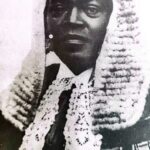YOHANNES IV
- 6 Min Read
Yohannes IV (1831-March 10, 1889) was emperor of Ethiopia from 1872-89. During his reign he was obliged not only to consolidate his power within his realm, but also to resist threats to Ethiopia’s sovereignty and territorial integrity posed by the Egyptians, the Italians, and the Mahdist movement in the Sudan, a messianic Islamic movement led by the Mahdi (Muhammad Ahmad ibn as-Sayyid ‘ Abd Allah [1844-1885], who founded a theocratic state extending from the Red Sea to Central Africa.

PHOTO CAPTION: Yohannes IV SOURCE: EA Library
Called Kassa before his coronation, he was born in 1831, the son of Shum Tameben Mircha and Em-beytey Silas. He was descended from the Tegréan royal family. Appointed Balambaras (“Commander of a fortress”) by Emperor Téwodros [reigned 1855-68], at the urging of Abuna Salama, head of the Ethiopian Church from 1841-67, he nevertheless rebelled against the emperor. He established his rule over Tegre three years before the arrival of the British expedition of 1868 led by Robert Cornelis Napier. Kassa did not establish contact with the British until he realised that the expedition’s aim was to free the British captives, after which he cooperated with Napier in obtaining supplies for him. When Napier withdrew, he presented Kassa with 12 light artillery guns and about 725 muskets.
In 1869 Kassa sent missions to Egypt, and secured the appointment of an abuna (bishop) for Tegre. In 1870 he concluded an agreement with a French engineer in Alexandria, Egypt, awarding him a contract to undertake all public works in his dominions. In 1870, Takla Giyorgis, who had assumed the title of emperor, and reigned from 1868-71, requested Kassa to send him the bishop, and to acknowledge his sovereignty. When Kassa refused, Giyorgis invaded Tegré, but was defeated and captured in July 1871. In January 1872, Kassa was crowned at Aksum as Yohannes IV. Upon becoming emperor, he determined to reunite the ancient empire, which had been dismembered at the end of the reign of Téwodros. Between 1872 and 1874, he was able to unify Lasta, Bagemder, Semén, and Gojam. At the same time he conciliated his most powerful adversaries by demonstrating his humanity and generosity.
The Egyptians sought to encroach systematically on Ethiopia’s frontiers, and had already occupied the ports on the Red Sea coast, as well as Gallabat, west of Gondar, Bogos, in western Eritrea, and Harar, thus blockading all the routes leading to and from Ethiopia. In 1873 Yohannes sent a mission to Europe to appeal to the powers for aid and mediation, but because the powers had interests in Egypt, the mission failed. Yohannes therefore resorted to war, met the advancing Egyptian army with superior arms, and defeated them at the battles of Guda Gudi (1875) and Guré (1876).
After these victories, Yohannes concentrated on the reunification of the empire. In 1878 he obliged Menilek, later to become Emperor Menilek II [reigned 1889-1913], to submit to him, and crowned him king of Shawa. At the same time the two men carefully demarcated their respective zones of influence – that of Yohannes being in northern Ethiopia, and that of Menilek in the south — while it was also agreed that Menilek should succeed Yohannes on the latter’s death. In 1880 he also crowned Ras Adal – later to become the Negus Takla Haymanot – as king of Gojam and Kaffa, and encouraged both Menilek and Ras Adal to reunify the adjoining regions, which were mainly inhabited by Galla and Sidama tribes.
In 1879, when the Khedive (viceroy of Egypt, representing the Sultan of Turkey) sent the famous British general Charles George Gordon to establish cordial relations between Egypt and Ethiopia without making any territorial concessions, Yohannes demanded the return of the Egyptian-occupied territories, the cession of the Red Sea port of Zayla, as well as the bay of Amphila (to the south of Massawa), the Khedive’s permission to consecrate bishops for Ethiopia, the payment of £2 million in reparations, or the cession of Massawa and a certain territory near Harar. The negotiations, therefore, broke down. But four bishops were consecrated for Ethiopia, arriving in 1881, and being distributed among the various regions to Christianise them and to help reunify the different parts of the realm.
Meanwhile, two Ethiopian kings, Menilek of Shawa, and Negus Takla Haymanot (formerly Ras Adal), ruler of Gojam, clashed on June 6, 1882 at the battle of Embabo, and were both rebuked by the emperor. To check further disaffection, and to strengthen the ties of allegiance, Yohannes’ son and heir, Areaya Selassé, was married to Menilek’s daughter, Zawditu, later to reign as empress from 1916-30.
The rise of the Mahdist movement in the Sudan, and the Sudanese rebellion against Egyptian rule, led to the arrival in Ethiopia of a British mission headed by Rear-Admiral Sir William Hewett, as a result of which a treaty was concluded between the United Kingdom, Egypt, and Ethiopia in June 1884. The treaty ceded Bogos to Ethiopia, and granted free transit of goods and arms through Massawa, in return for permission for the Egyptian garrison posted along the Sudanese frontier with Ethiopia to withdraw to safety through Ethiopia. Yohannes was later asked by the British to send troops to relieve the Egyptian garrisons. Before undertaking this operation, however, Yohannes wrote to the Mahdi, and later to his successor, the Khalifa Abdullah Muhammad, to sound their views.
But since in their replies they refused to deal with a non-Muslim, Yohannes gave up diplomacy, and instead sent troops, which defeated the Mahdist forces in a series of battles at Gallabat, al-Jirra, and Kufit, along the Sudanese-Ethiopian frontier. The Egyptian garrisons in these places were then permitted to pass through Ethiopia to the coast, to be repatriated.
Unfortunately, the occupation of Massawa on the Red Sea coast by Italy, with British encouragement, in February 1885, and the subsequent Italian encroachment into the interior of Ethiopia, made the Hewett Treaty useless. But, when Egypt evacuated Harar, Yohannes instructed Menilek to occupy it for Ethiopia in January 1887.
The Italians, who were advancing on Asmara from the coast, were defeated by Ras Alula, one of the generals of Yohanues, at Dogali in 1887, but later reoccupied the nearby village of Saati.
Yohannes attacked them again in March 1888, but could not eject them. He therefore decided to make a truce with them, and instead moved westwards towards the Sudanese frontier, where the Mahdists had already defeated Takla Haymanot, had raided western Ethiopia, burning parts of Gondar, and were posing threats to the country. Yohannes again appealed to the Mahdists to avoid a war between two African states, when both had a common enemy in the European powers. When his appeal was rejected on religious grounds, Yohannes attacked the Mahdists at Matamma, in the Sudan. Mortally wounded in the battle, he died on March 10, 1889.
ZWEDE GABRE-SELLASSIE




